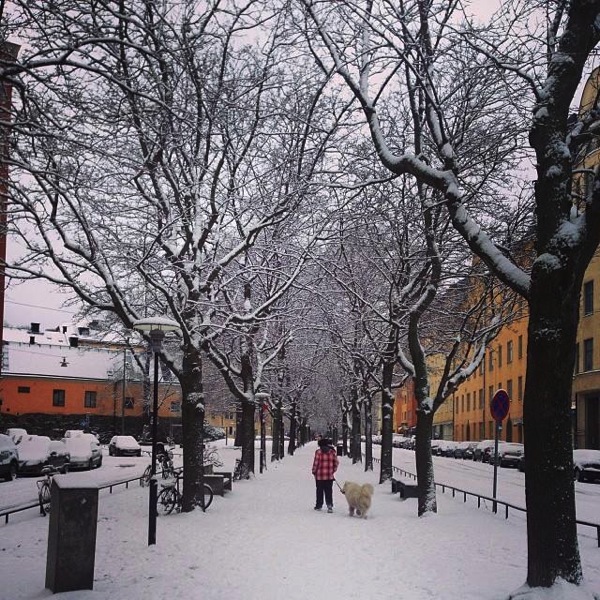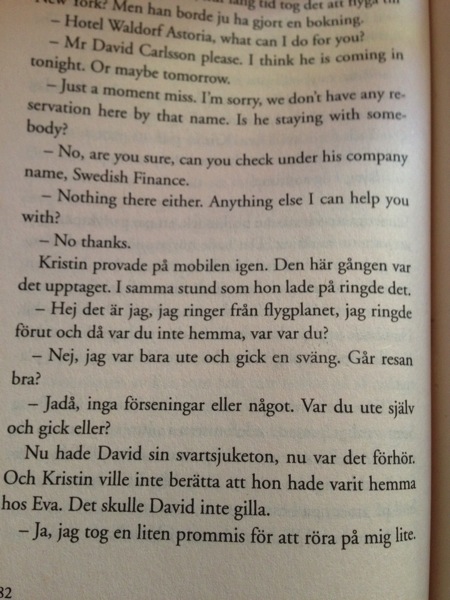Currently Browsing: Expat Life
7 May 2014
Posted by Michelle in Expat Life, Language | 0 comments
So you’re thinking of raising your children bilingually – there are many strategies for achieving this very worthwhile goal, so read ahead and I’ll go into details of each of the popular methods.
It’s generally understood that if children are exposed to a language for 30% of their time they will pick the language up, but it’s important to keep in mind that this isn’t just 30% of the time for a year or two, it’s constantly. The key to learning and maintaining language is to use it consistently over a long period of time.*
One Person, One Language (OPOL) Method. Sometimes written as the One Parent, One Language method.
You’re a native Japanese speaker living in Amsterdam and your partner is Dutch – you both decide to speak to your child in only your native tongues, this is the OPOL method in action.
This is very popular and as the name suggest, one person usually one of the parents speaks a language with their child while the other parent speaks another language to the child, thus raising the child bilingually. If it’s not the parents it might be a grandparent, an Au-pair, school teacher and so on. One of these languages might be the language of the country the family is living in, or it might be that you are speaking two minority languages at home and the children learn a third in school.
Sometimes children can be sneaky and realise that ‘hey, if I speak Dutch to mum she understands me and I can escape from learning Japanese and spend more time playing computer games. Win!’ Here is where it helps to be very consistent, you might simply say in Japanese that you don’t understand, or respond in Japanese. What is most important is instilling in your children the importance of the second language, especially if it’s tied to their cultural heritage – this way they are more likely to see the need and develop a desire to speak the language, rather than seeing it as a waste of time. Trips to countries in which the language is spoken can help here too (see Time and Place method), especially if they are able to interact with cousins and grandparents who only speak one language.
You can read my interview with Professor Christof Demont-Heinrich about how he is raising his children in German and English using the One Parent, One Language approach – the very interesting this here is that Christof isn’t a native speaker of German (although his father was) and yet he is successfully raising his children to be bilingual. This is one of the positive sides to this approach – you don’t necessarily need to be a native speaker of the language – although if this is the case it might help to supplement with a tutor or Au-pair who can help with grammar and pronunciation.
Minority Language at Home (mL@H) Method
Say you’re living in Germany for work but you are originally from the UK – you might choose to send your children to a local German school so they can pick up the language and culture while speaking only English as a family at home. This is the Minority Language at Home method, because your family language is not the dominant local language.
This is a very popular method, both by choice and by necessity for many families around the world. It’s an effective way for your children to become bilingual – just keep in mind that this might mean your children are fluent in relaxed conversation, but it could be a very different story if they had to write an essay in the language.
I was interviewing a Finnish woman a couple of weeks ago who grew up in a number of different countries and attended international schools in English – she had recently read back her first university essay in Finnish and was amused and a little horrified to find that it sounded like she was chatting to someone in a club. Having spent the majority of her formal education in a non-Finnish environment, it meant by the time she reached university her academic Finnish was not as good as her English, despite Finnish being her mother tongue and the language she used at home every day. I’ve heard this happen time and time again, so it’s really important to make sure your children practice academic writing and are exposed to literary, political, academic, etc works in both languages (written and spoken).
Time and Place Method
This method is best used in combination with those above.
You might live in the USA but have a deep passion for the Chinese language and culture, spending long summer breaks there each year with your children where they play with local children in Mandarin and maybe even attend an immersion language program there. You think wistfully of China back home in the USA, but you don’t necessarily speak the language with your children – you just make an effort to visit China as often as you can.
Obviously this method might not be as effective as the OPOL or mL@H method, simply due to lack of time spent immersed in the language. There are of course ways to supplement this with a more mixed method – say T&P + OPOL for example a Mandarin speaking Au-pair, children attending an English-Mandarin bilingual school or play group, and so on.
So what is the best method?
That is up to you, your family and your circumstances. Some people might not feel comfortable speaking to their child in any language but their mother tongue, meaning that if both parents are Australian and they live in Australia, obviously Minority Language at Home is ruled out. They might then choose to send their child to a French/English bilingual school making use of the OPOL method and supplement this with a trip to France every few years, or sending their child on exchange during high school for a year.
It’s about finding a method that feels right for you, researching it (books, blogs, forums), experimenting and being consistent.
* Read Raising a Bilingual Child by Barbara Zurer Pearson for more information on this topic – it’s an excellent book!
Are you raising your children bilingually? What methods do you use?
5 Mar 2014
Posted by Michelle in Expat Life, General | 2 comments
Hello long lost website! It’s been way too long since I last posted here. January has come and gone, marking my three year anniversary in Sweden. For a place I was only going to be for six months, it’s certainly been an interesting journey to get to this point.
I’ve started to think a little about how life has changed for me since I first arrived that freezing winter evening in Uppsala on the 9th of January 2011. A time when my eyelashes froze as I rode my bike to university and -20 was the norm, compared to this winter when confused bears emerged early from hibernation, and flowers were seen blooming in December.

First of all, I can now walk on icy roads without falling over – something I did twice on my first night in Uppsala as I walked to the supermarket to buy food. The shame, as polite Swedish people discreetly looked away while I scrambled about. I used to look in awe at Swedes power walking on icy streets and wonder if they had some magical ability to remain upright, and whether this could be learned, or if I’d forever be disgracing myself – luckily 3 years later I seem to have learnt this skill. The fact that there has been no snow this year in Stockholm has helped too.
Secondly, my Swedish is better, but not yet fluent. I like to do 200383283 things simultaneously, so at the end of 2013 I was taking evening classes in Dutch (taught in Swedish, for added confusion), while reading Swedish novels during the day and learning German verbs on the side. Apparently my brain didn’t appreciate this, and I became fluent in exactly 0 of my desired languages, but I did improve in all of them. So I decided to cut out the Dutch for now, and focus of Swedish (particularly if I want to apply for citizenship in the future) with a bit of German on the side to keep me from forgetting it.
I still have a long way to go with Swedish, my pronunciation in particular, but it is definitely vastly improved from this time 3 years ago (I had studied it at University in Australia for a year before I arrived). My motivation has been a bit reduced because I can get away with my Swedish, but I wouldn’t be able to work in it, which would be useful. I’m not sure what my next step is here – whether I should take another class or just keep reading novels. I also need to speak more – but I’ve started to try this out with some of my other foreign friends.
Next, I own an apartment here now, which makes Stockholm feel more like home. I never thought the first property I would own would be in Sweden, it’s funny how life works out!
I’m considering a change of careers – at least in terms of my day job. More on this later when it is confirmed.
As for my other job – giving speeches and seminars on growing up globally, this has been going very well! I was just in Berlin giving a seminar to the parents at the JFK School in Berlin, a really interesting bicultural German/American school. I’ll be going back in May to present to the teachers and then the parents of some international kindergartens in Berlin too. I’m really enjoying this work, and I can’t wait to meet more parents and teachers, as there were so many interesting discussions after my last presentation.
The free time I’ve had in Sweden has definitely allowed me to take some interesting opportunities I wouldn’t have been able to if I was back in Australia working full time. Being located in Europe means I can take the opportunity to give a speech in Germany without having to fly 26 hours to do so. I’m also working on another Master’s thesis on global childhoods – because, why not!
I have a great group of friends here now, for some reason a large number of them are Finnish, and these friendships are making me feel much happier here than I was at the end of 2011.
I love the Swedish summer – it’s perfect for a red haired person like me – not ridiculously hot like in Australia. I love the berry stands that pop up around town, everyone sitting the the parks looking happy, and Stockholm is a beautiful city to walk around when the sun is out.
I still think Dalarna is the cutest place in Sweden, in particular, Tällberg – seriously, if you come to Sweden you should visit there. My mother wanted to buy a little red wooden house there when I took her for a visit. It’s just so picturesque and so very Swedish.

So does Sweden feel like home now? Yes, in part. Having a home, friends, being able to understand the language better, and having work has helped me to feel much happier in Sweden than two years ago, but it has still never felt as much like home to me as Melbourne, Vienna, or even Berlin. But it is home for now, and I want to make the most of it.
It will be interesting to see where in the world I am in three years from now.
18 Nov 2013
Posted by Michelle in Expat Life, Sweden | 6 comments
Geoff and I just bought an apartment in Stockholm, and there are definitely some differences in the process from what you might have experienced buying property in other countries.
Here are the steps we have gone through:
1. Visit hemnet. Hemnet is the place where all of the properties in the Kingdom of Sweden is listed. You simply put in the specifications:
The area you are interested in searching in. For example: Södermalm or Östermalm.
Avgift: Avgift is basically like rent – you pay this price every month when you live in an apartment building. Newer buildings tend to have higher avgift than older ones. These tend to range from around 2000 SEK a month to 4500 SEK, but I did see one as high as 8,000 SEK. Often this covers water and heating. Sometimes also internet and cable TV. The property description will tell you what’s included and isn’t.
Pris: Your minimum and maximum price amount for the property.
Rum: How many rooms you are looking for. Keep in mind the living room is considered a room, so if you want 2 bedrooms and a living room you’ll need a 3 room apartment. Some are listed at 2.5 room apartments – this is either a tiny little bedroom for a child, or a bit of extra space in a room that could fit a desk.
Boarea: The minimum amount of square meters.
Bostadstyp: If you are looking for a house, apartment, etc.
2. View the property. Once you find a property you like, you’ll want to go along to see it. You normally find the viewing times located on the righthand side of the page (visningar). Many of the real-estate companies also have a handy SMS reminder service where you can type in your phone number and they will text you a few hours before the viewing to remind you of the details.
Once you get there you remove your shoes (and try to somehow manoeuvre yourself though the field of shoes) and then are met at the door by a real-estate agent and they will take down your details and give you a brochure of the apartment. You then join 40 other people in squeezing around a 65 square meter apartment.
3. Bidding. Within a day or two, the real estate agent will give you a ring to ask if you are interested. If you are you will be subscribed to a handy SMS update list where any bids that come in for the property are SMSed to your phone. A month or two ago my phone went insane as I was bidding for one apartment and had another as backup (neither of which we ended up buying). If you want to bid you can send a text message (!!!!) to the agent with your bid, or you can call or email it in. Initially I decided the call option seemed like the best idea, as the thought of texting in a bid seemed utterly bizarre to me – but 3 apartments in I started texting away – also receiving an encouraging text from the agent praising me for figuring out the Swedish bidding process (?!).
Biding can also be tracked online if you look up the property listing.
The bidding can go on for days – For some apartments the bidding went of for 4 or 5 days – the one we ended up buying was an almost 2 week process. I asked the agent if there was a cut off point or if bidding goes on, gladiator style, until the last man standing, and he said they do tend to start pressuring you after a certain number of days to wind down the bidding.
Also on the topic of bidding – like everywhere else in the world there are very obviously techniques here to try and encourage the prices to go through the roof. One that I’ve noticed is when you are initially called by the agent to ask if you are interested they sometimes try and pressure you into making a bid there and then. One woman informed me that I was one of 60 people she would be calling (oh my god!!!! the competition!!!!!) and that if I was keen I should put in an arbitrary bid of 5,000 SEK or so. I am sure 60+ people were at the viewing, but I am also quite aware that many of them probably lived in the area and wanted to see what a similar property sold for, or were simply getting a feel for what is available for sale in the area. I’m very sure 60+ people were not bidding, and sure enough from what I saw, only 5 did in the end. I’m also quite sure the only bid I need to put in is the one that buys me the apartment, and that 5,000 SEK bids to ‘show my interest’ are both unnecessary and also, kind of dodgy. I decided that I didn’t really want to buy an apartment from her.
Because the bidding is fairly secretive – i.e. you don’t know if cousin Sven is texting in bids to push the price up, you also need to be fairly strict and keep to your budget – don’t allow the agent to keep pushing you up that little bit extra. I’ve read an example on a Swedish website where the bidding kept going up until the person reached their maximum amount and said that were out – the agent then said ‘Oh well the other bidder might drop out – let me call them’ – which makes it fairly obvious something fishy was happening. If this happens to you and the mysterious other bidder does drop out – and this could happen legitimately as well – then you can go back and negotiate the price downwards – don’t let them pressure you into agreeing to your maximum amount.
4. Best time to buy? The IMF recently warned of a Swedish housing bubble. I’m not a financial expert and can’t make an informed comment on this topic – but I can say that the prices in our area of Sweden are absolutely insane, and have increased significantly even from last year. I recently spoke to a real estate agent who informed me that buying straight after summer is the most expensive time of the year as there are few properties available, and many eager buyers. She told me that November is the best time of the year to buy in Stockholm in terms of value for money.
5. Signing the contract. After a long drawn out process it was time for us to sign the contract. We went to the real estate agency and met the couple that owned the apartment, signed a ridiculous number of documents and sorted out our payment.
6. Awaiting board approval. Here in Sweden apartment buildings have a sort of board that, among other things, needs to approve new tenants into the building. The real estate agent told us it’s more of a formality, but I do know at least one couple that had to go in for an interview before being approved.
7. Getting the keys. We had a very short settlement period – only 5 weeks as the people who owned the apartment we bought had already bought a house and wanted to move out quickly – this short time worked for us too as we are currently renting. We returned back to the real estate agent for the keys and once our final payment went though, the apartment was ours.
8. Renovations. From what I can tell, you can’t just renovate your apartment as you desire – in terms of tearing down walls. You’ll need to ask board approval for that. For fixing floors, painting and so on, we haven’t needed approval, but I have no idea if this is just our building, or all of Sweden.
Make sure if you hire a company to renovate for you that you ask for rot-avdrag. This gives you 50% off the work done – for some reason in Sweden renovations are tax deductible. I thought you’d need to claim it afterwards, but luckily found out that you ask first and the renovation company will claim it.
This might also be a good place to mention hiring a cleaner is also tax deductible here – it’s called rut.
We have to pay our avgift quarterly, but that’s it really. Once the renovations are over, we’ll move in and I’ll be very glad to not have to look at Hemnet for the foreseeable future!
27 Aug 2013
Posted by Michelle in Expat Life, Language | 2 comments
I’ve been reading a Swedish novel over the last two weeks and found something quite interesting. At one point in the book the protagonist calls up the hotel her husband is supposedly staying in in New York – but the interesting thing for me was that the novel simply switched to English when she made the call rather than continuing on in Swedish.

According to the 2012 Eurobarometer report on Europeans and their languages, 86% of Swedes (and Danes) say that they speak English well enough to have a conversation. Only the Dutch at 90% and the Maltese at 89% have a higher rate of English language ability in Europe.
For me, the assumption is clearly that Swedes will all understand English well enough for this language swap to be completely acceptable. I’ve occasionally seen the odd French phrase included in English language novels, particularly when reading the classics, but never entire paragraphs, and certainly never in chick lit novels such as the one I found this example in (Väninnan by Denise Rudberg).
Have you seen other novels with entire paragraphs in another language? I’m really curious to see whether this is a common theme around the world, or if it is simply because the Swedes are so confident in their English language abilities. I wonder if it is also the case in Dutch books too.
21 Aug 2013
Posted by Michelle in Expat Life, General | 8 comments
It’s been awhile, but I’m back.

Fresh water lake on Fraser Island, Australia
The last 4 or 5 weeks have been some of my least favourite in Sweden, and as a result, I’ve felt completely uninspired to write here.
It’s been a year and a half since I’ve been back to Australia and it’s been well over a year since I’ve been to an English speaking country (Ireland) – these two factors combined with the fact that my family have been off in the outback out of phone reach for almost 2 months, my husband was away for work for a few weeks, and almost every friend I have in Sweden has been away for the past 6 weeks has meant I’ve been suffering from homesickness, loneliness, or a bit of both. I’m actually feeling much better now, or I’d probably still be on blog strike.
Signs I’ve been homesick:
1. I feel like a friendly labrador that wants to go up and greet strangers. Last week I was walking down the street in central Stockholm and overheard an old Australian couple walking in front of me – I really slowed down for a good 20 seconds or so trying to think of a reason to chat to them, if only to hear an Australian accent for a few minutes. Yesterday I was in a department store and overheard an Australian woman buying a huge number of things for a/her house – this would suggest to me that she had probably just moved here and I thought about saying hello – the fact that I didn’t might suggest I’ve been in Sweden too long as I am sure she would have been very friendly. Last time I went back to Australia I only went as far as the airport bathrooms before a total stranger started chatting to me. 5 minutes later, and the same thing happened again. This is something I’ve been missing.
2. I’ve taken to watching Australian TV shows (of dubious quality) that air in Sweden. Border Security, Master Chef Australia, Australia’s Next Top Model, McLeod’s Daughters, the list goes on and on.
3. I feel happy to do otherwise boring errands that involve calling up my Australian bank, University, etc. Although this might just suggest a need to speak English more as I gained the same (surprising) pleasure from calling a British shop about a dress I ordered that they lost.
4. I was constantly searching for flights to Australia. I haven’t booked anything yet for two reasons:
1. Because I am waiting for my new visa for Sweden and am not allowed out of the country without it. Well I could leave, but I would most likely be unable to return. Everyone has been on holiday in Sweden, which means that the immigration office hasn’t been processing visas and I’ve now been waiting 4 months for a simple visa renewal.
2. Because I’ll have to wait until (Australian) autumn next year to go. I’m not used to 40 degree summers anymore, and my mother lives in the tropical part of Australia which is very red-haired person unfriendly. I actually have a note in my calendar today to book flights back to Australia…
Some of the things I’m missing about Australia: Apart from my wonderful family and friends of course.
Finding creatures like these in the garden:

A friendly green tree frog in my mother’s garden. I’ve found these guys everywhere – once I even found one curled up around an eyeliner in my mother’s makeup bag!


kookaburra
The many varied landscapes of Australia

Skyline of Melbourne, Australia




Ok, time to stop the complaining. I just thought it was good to point out that life overseas, even in the land of delicious summer berries, and cute dalahästar, is not always rosy, and even when you’ve moved a lot, you still sometimes experience homesickness.
(All photos are either mine or used with permission)






















